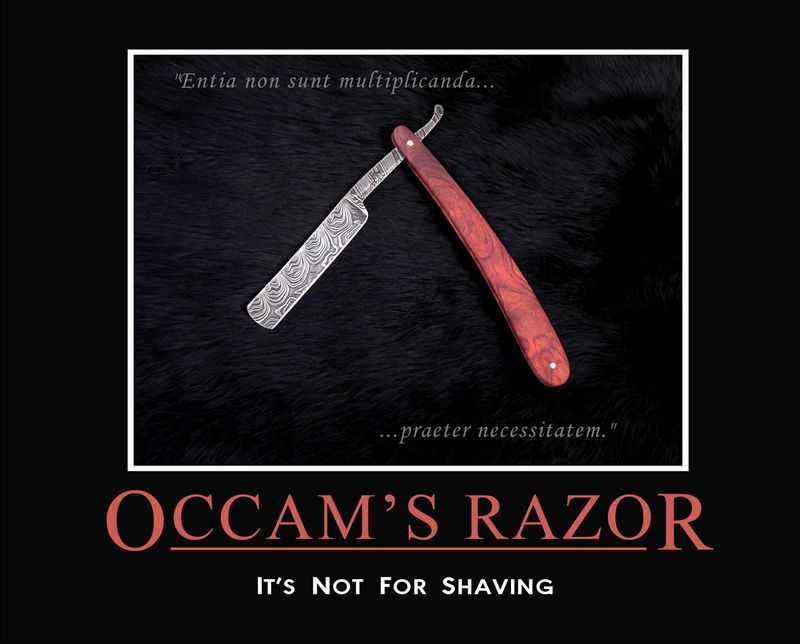
First razor: Given two models with the same generalization error, the simpler one should be preferred because simplicity is desirable in itself.Occam’s Razor sounds simple, but what does it really mean in practical machine learning? In 1996, Pedro Domingos formally applied Occam’s Razor to machine learning, introducing the following implications, which he called “Occam’s Two Razors”:

Practical Application to Machine Learning The more complex explanation involves more assumptions, many of which have not be scientifically validated, and thus the more complex theory, although it predicts the same result, is more likely to be incorrect. If an assumption does not make our theory more accurate, it only increases the probability that the entire theory is wrong.įor example, if we wanted to explain why the sky is blue, a simple explanation based on the properties of light is more likely to be correct than an explanation that involves aliens in space scattering blue dust into the Earth’s atmosphere to give the sky it’s color. The more assumptions we add to the theory, the greater the probability that one of the assumptions is incorrect. By definition, more complex theories involve more assumptions. Occam’s Razor is a direct consequence of basic probability theory. In other words, with all else being equal, simpler solutions to problems are preferred over more complex ones. It wasn’t until over a thousand years later that an English Franciscan friar and theologian named William of Ockham made the statement “entities must not be multiplied beyond necessity”, which later became known as Occam’s Razor. Image source: After Lysippos, Public domain, via Wikimedia Commons ISBN 9780091117207.Aristotle was the first to state the idea behind Occam’s Razor. Studies in Epistemology and Cognitive Theory. Reality and Humean Supervenience: Essays on the Philosophy of David Lewis. Inroads: Paths in Ancient and Modern Western Philosophy. What can be asserted without evidence can also be dismissed without evidence. Crimes of the Century: From Leopold and Loeb to O.J. ^ Geis, Gilbert Geis, Professor Emeritus of Criminology Law and & Society Gilbert Bienen, Leigh B.Popper Versus Einstein: On the Philosophical Foundations of Physics. Archived from the original on 14 November 2011. First do No Harm: Law, Ethics and Healthcare. In Eatwell, John Milgate, Murray Newman, Peter (eds.). Sagan standard: Extraordinary claims require extraordinary evidence.He wrote that if he were to assert, without offering proof, that a teapot, too small to be seen by telescopes, orbits the Sun somewhere in space between the Earth and Mars, he could not expect anyone to believe him solely because his assertion could not be proven wrong. Russell's teapot: Is an analogy, formulated by the philosopher Bertrand Russell (1872–1970), to illustrate that the philosophic burden of proof lies upon a person making empirically unfalsifiable claims, rather than shifting the burden of disproof to others.Popper's falsifiability principle: For a theory to be considered scientific, it must be falsifiable.

Occam's razor: Simpler explanations are more likely to be correct avoid unnecessary or improbable assumptions."If the cause, assigned for any effect, be not sufficient to produce it, we must either reject that cause, or add to it such qualities as will give it a just proportion to the effect."



 0 kommentar(er)
0 kommentar(er)
